Description of Relief
- Describe the general appearance of the entire area e.g. hilly, mountainous, plain, undulating landscape, has many hills, isolated hills, etc.
- State the highest and lowest parts of the area.
- Look out for valleys which are occupied by rivers.
- Divide into relief regions such as plateau, escarpment and lowland.
- Explain the type of slop e.g. gentle, steep, even or irregular.
- Direction of slope.
- Identify the land forms present in the area.
Gentle Slope
Slope is the gradient of land surface.
Gentle slope is one in which land doesn’t rise or fall steeply Contours are wide apart
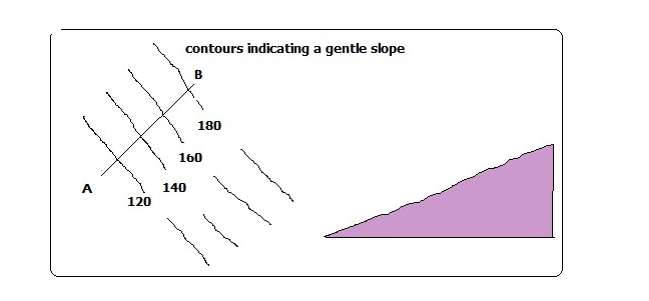
Steep Slopes
Where land rises or falls sharply – Contours are close to each other
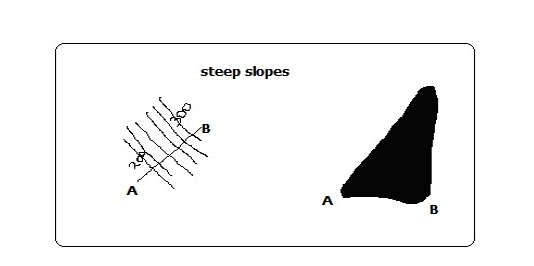
Even Slopes – Shown by contours which are evenly spaced.
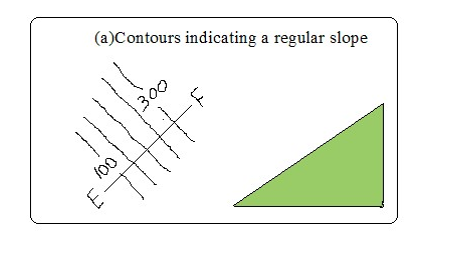
Uneven Slopes – Indicated by unevenly spaced contours.
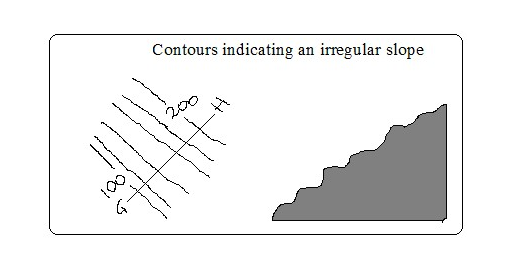
CONVEX SLOPE
- One curved outwards
- Indicated by contours which are close together at the bottom and widely spaced together at the top.
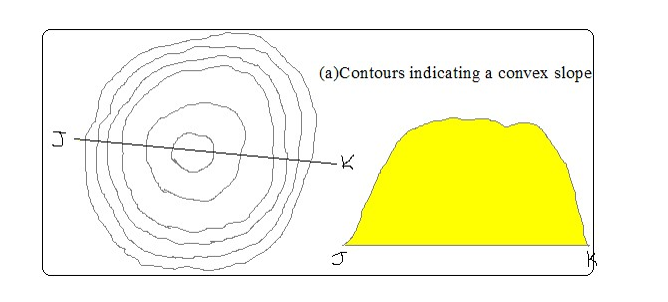
Concave Slopes
One curved inwards.
- Contours are close together at the top and widely spaced at the bottom.
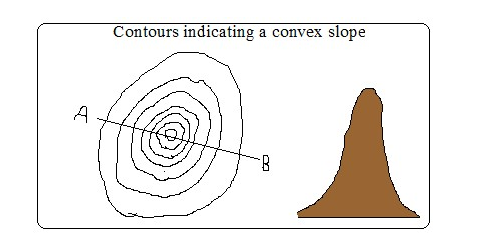
Valley
A low area between higher grounds.
- Indicated by U-shaped contours pointing towards a higher ground.
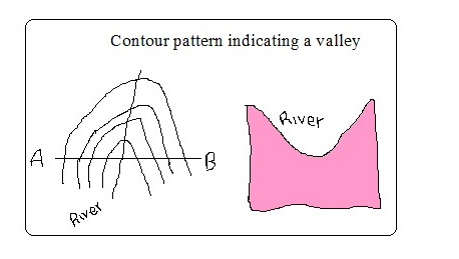
Spur – Land which is projected from high to low ground.
- Indicated by U-shaped contours bulging towards lower ground.

- Spurs in glaciated highlands whose tips have been eroded and straightened.
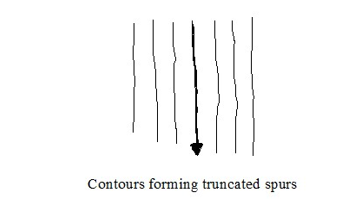
Conical Hills
- Hills are uplands which rise above relatively lower ground
- Conical hills are small rounded hills

Ridges – A range of hills with steep slopes on all sides.
- A ridge can contain hills, cols, passes or water shed.

A Col – A low area which occurs between two hills.
A Pass – A narrow steep sided gap in a highland.
A Water Shed
- The boundary separating drainage systems which drains into different directions – Escarpment and ridges often form water sheds.
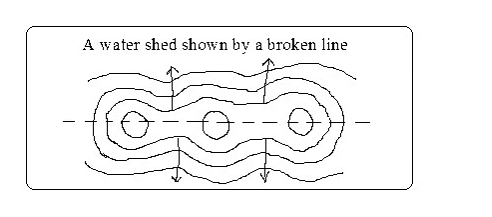
Escarpment
- A relatively continuous line of steep slopes facing the same direction
- Has two slopes: a long gentle slope (dip slope) and short steep slope (scarp slope).
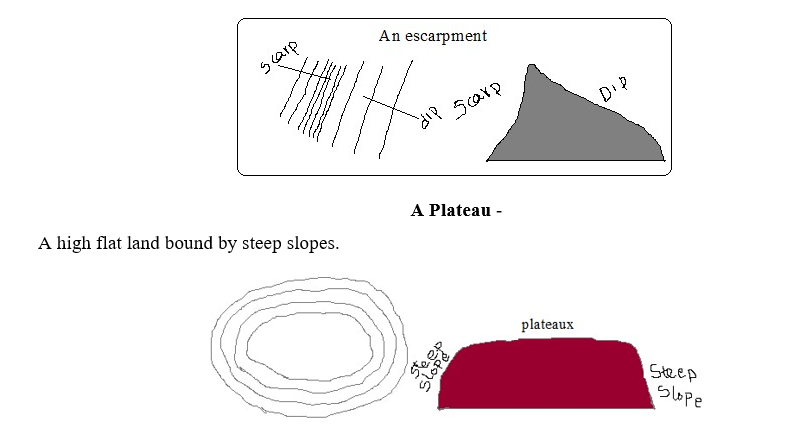
Description of Vegetation Natural vegetation is classified as woodlands, thickets, scrubs or grasslands. Symbols are given as pictures of vegetation.
- Types present
- Distribution
- Reasons for distribution e.g. seasonal streams, scrub or grassland due to low rainfall.
1. Forests
Likely indications of the following in the area:
- Heavy rainfall
- Fertile rainfall
- Cool temperature depending on altitude
2. Thickets and shrubs
- Seasonal rainfall
- Poor soil
- High temperature
3. Riverine trees
- High moisture content in the river valley
Describing Drainage
- Identify drainage features present
Natural drainage features include lakes, rivers, swamps, sea, rapids, water falls, cataracts, springs, deltas, fjords, sand or mud, and bays
Artificial features include ponds, wells, boreholes, water holes, cattle dips, cattle troughs, canals, reservoirs, irrigation channels, aqueducts, water treatment plants and man made lakes.
- Identify main rivers by name
- Size of rivers-big or small-shown by thickness of blue lines.
- Give the general direction of flow.
- Location of water shed if any
- Characteristic of each feature
Permanent Rivers
- Which flow throughout the year
- Shown by continuous blue lines
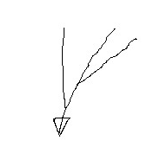
Likely indication of:
- Heavy rainfall
- Impermeable rocks
Seasonal Rivers
- Which flow seasonally or during the rain season
Shown by broken blue lines
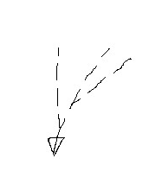
Likely indication of:
- Low rainfall
- River doesn‟t have a rich catchment area
Disappearing Rivers
Blue lines ending abruptly
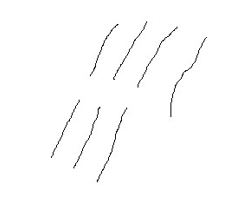
Likely indication of:
- Permeable rocks
- Very low rainfall
- Underground drainage
Identify drainage patterns and description
-Drainage pattern is the layout of a river and its tributaries on the landscape.
1. Dendritic -Resembles a tree trunk and branches or veins of a leaf.
Tributaries join the main river at acute angles.
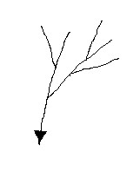
2. Trellis
Tributaries join the main river and other tributaries at right angles of hard and soft rocks)
Common in folded areas where rivers flow downwards separated by vertical uplands.
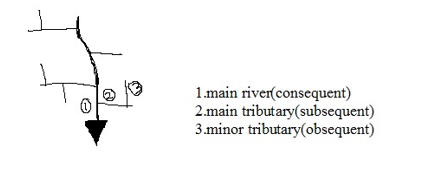
3. Rectangular Pattern -Looks like a large block of rectangles.
Tributaries tend to take sharp angular bends along their course.
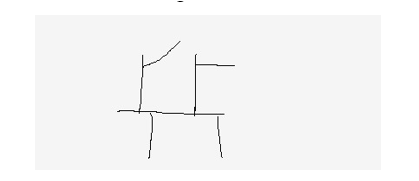
4. Parallel Pattern
Rivers and tributaries flow virtually parallel to each other
Influenced by slope
Common on slopes of high mountain ranges
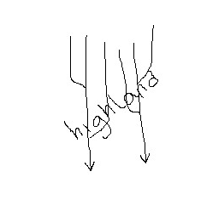
5. Centripetal Pattern
Rivers flow from many directions into a central depression such as a lake, sea or swamp.
Examples are rivers flowing into some of the Rift Valley lakes such as Nakuru and Bogoria.

6. Annular Pattern
Streams (rivers which are small in size) are arranged in series of curves about a basin or crater
It‟s controlled by the slope.
7. Radial
Resembles the spikes of a bicycle
Formed by rivers which flow downwards from a central point in all directions such as on a volcanic cone e.g. on Mt. Kenya, Elgon and Kilimanjaro.
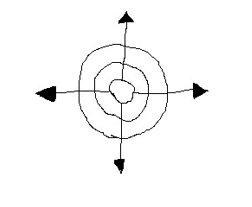
8. Fault –Guided Pattern
Flow of river is guided by direction of fault lines
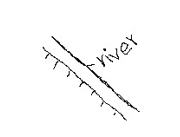
Human/Economic Activities
Description of Human Activities
- Identify types
- Evidence –man made features
- Reasons e.g. tea-cool temps and heavy rainfall
Agriculture
1. Plantation farming
Evidenced by presence of:
-“C”-coffee
Named estates e.g. Kaimosi tea estate
2. Small scale crop farming
- Cotton ginnery or sheds
- Coffee hullerlies
- Posho mills for maize, millet, sorghum
- Tea factory/store
Livestock Farming
- Dairy farms
- Veterinary stations
- Cattle dips
- Creameries
- Water holes
- Dams
- Butcheries
- Slaughter houses
Mining
- Symbol for a mine/mineral works
- Name of the mine
- Particular mineral e.g. soda ash
- Quarry symbol
- Processing plant of a mineral e.g. cement indicates cement is mined in that area
Forestry/Lumbering
- Saw mills
- Forest reserves
- Forest station
- Forest guard post
- Roads ending abruptly into a forest estate used to transport logs to saw mills
Fishing
- Fish traps
Fishing co-operative society
- Fish ponds
- Fish hatcheries
- Fisheries department
- Fish landing grounds(banda)
Manufacturing/Processing Industry
- Saw mills for lumber products
- Ginnery for cotton processing
- Mill for maize, millet, wheat processing
- Creameries for milk processing
- Factory for manufacturing or processing a known commodity.
Services
Trade
- Shops
- Markets
- Stores
- Trading centres
Transport
Land – Roads
- All weather roads- which are used all year round i.e. tarmac and murrum roads.
- Dry weather roads- which are used reliably during dry seasons.
- Motorable trucks- rough roads which are used by people on foot and by vehicles on dry season.
- Other trucks and foot paths
- Railways, station, sliding, level crossing lines and railways light
Air
- Air fields
- Airports
- Air strips
WATER
- Ferries
- Bridges
COMMUNICATION
Post Offices
Telegraphs
Telephone lines
TOURISM
Camping sites
Tourist Class hotels and restaurants
National parks
Game reserves
Curio shops
Museums
Historical Monuments
ADMINISTRATION
DO, DC, PC, Police post, chief camp
Social Services
Religious Services
- Church
- Mosque
- Temples
Education
- Schools
- Colleges
- Universities
Health Services
- Hospitals – Dispensaries
Recreational Services
- Golf clubs/courses
- Stadiums
Description of Settlement A settlement is a place with housing units where people live together
- Densely distributed settlements- high concentration of settlements(black dots)
- Moderately distributed settlements- settlements moderate in quantity
- Sparsely distributed settlements-few settlements spread over a large area.
- Very sparse if very few
- Identify type of settlement patterns present
- Type of Settlements
Rural settlements
Consist of villages and homesteads and homesteads in which people are involved in subsistence agriculture and traditional activities such as pottery weaving, curving, etc.
Urban settlement
Consist of dense permanent and sometimes high buildings and population engaged in non agricultural activities such as industrial activities.
Factors Influencing Settlement
Physical Factors
1. Climate
Areas with moderate temps and adequate rainfall are densely settled while those with extremely low or high temps have fewer settlements.
2. Relief
Terrain: Steep slopes are less settled due to thin soils and difficulty to erect buildings.
Aspect: Slopes facing away from the sun in high latitudes are less settled than those facing the sun.
Wind ward slopes of mountains on the path of rain bearing winds are more settled due to heavy rainfall making them ideal for agriculture.
3. Drainage
Rivers and springs attract settlements because they provide clean water.
Areas with drainage swamps are less settled because it‟s difficult to erect buildings and they also harbour mosquitoes and snails which cause diseases.
4. Vegetation
Dense forests discourage settlements because of wild animals and also harbour disease vectors such as tsetse flies e.g. Miombo woodland of Tanzania and Lambwe valley in Kenya.
5. Pests and diseases
Areas prone to pests and diseases are less settled because people like to live in healthy environment.
Natural resources Settlements start where there is mineral extraction. e.g. Magadi Lakes with abundant fish may also attract settlement.
Human Factors
Political factors
- 1967 TZ settled peoples in villages and the rest of land was left for farming (Ujamaa villages)
- After independence Kenya settled its landless in settlement schemes e.g. Mwea, Laikipia, Nyandarua. – Settlement of refugees in refugee camps due to political upheavals
Historical factors
- Weaker communities were forced to move elsewhere by wars.
- Settlement of communities in strategic sites such as hilltops or plateaus to see approaching enemies e.g. Fulani of Nigeria in Jos plateau.
Cultural factors
- Farming communities settled in agriculturally productive areas.
- Pastoralists settle in areas with enough land to provide pasture for their animals at ease.
Economic factors – Rural to urban migration for employment and trading.
- Mining activities may lead to development of settlements e.g. Magadi due to trona mining.
Types of Settlements Patterns
1. Nucleated/Clustered Settlement Pattern

Buildings are close to each other
Factors
- Availability of social amenities such as schools and health care
- Shortage of building land
- Favourable climate leading to high agricultural potential e.g. Kenya highlands.
- Fertile soils.
- Presence of natural resources e.g. minerals in Magadi, Mwadui, Kimberly.
- Security concern especially in banditry prone areas
2. Linear Settlement
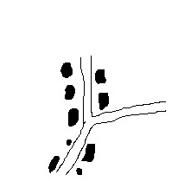
- Buildings are arranged in a line
- Presence of a transport line e.g. road or railway.
- Presence of a river or a spring to provide water for domestic or commercial use
- Presence of a coast line which has a favourable fishing ground e.g. shore of E. African coast.
- Suitable terrain for cultivation of crops such as at the foot of a scarp
3. Dispersed/Scattered Settlement
- Buildings are scattered
- Plenty of land to build whenever they want
- Avoidance of harsh climate e.g. arid and semi-arid areas.
- Poor infertile soils.
- Pests and diseases.
- Physical features such as ridges, valleys which separate houses.
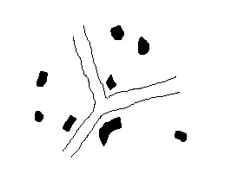
4. Radial Pattern
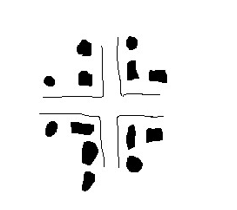
Buildings are arranged like a star
Common at cross roads where housing units point in all directions.
Enlargement and Reduction of Maps
Steps
- Identify the area requiring to be enlarged
- Measure its length and width
- Multiply (E) or divide (R) the by the number of times given. The scale also changes
e.g.1:50000/2(enlarged)×2(reduced)
- Draw the new frame with new dimensions
- Insert the grid squares e.g. 2×2cm, 2/2, etc.
- Draw diagonals on the frame
- Transfer features exactly where they were
Drawing a Cross Section/Profile
Line drawn on a piece of paper showing the nature of relief of a particular area.
Steps
- Identify the given points and name them A and B
- Joint point A and B using a pencil
- Take a piece of paper and fold it into two parts
- Place the papers edge along the line joining A and B
- Mark all contours and their heights
- Mark features along A-B e.g. R- river, H- hill, M- mountain
- Determine the highest and lowest contour height to determine the appropriate vertical scale
- Draw horizontal axis and mark it A-B
- Draw vertical axis from A to B
- Place the edge of folded paper along horizontal axis
- Use values along vertical axis to plot contour heights. Remember to show features marked along A-B
- Join plotted points using smooth curve (cross Section)
- Include title on top vertical and horizontal map scale.
Calculation and Interpretation of Vertical Exaggeration and Gradient
Vertical Exaggeration Number of times that the vertical scale is larger than horizontal scale V.E. =Denominator of H.S. /D. of V.S. (cross section scale.
e.g. V.S. =1:20M
H.S=1:50000
V.E.=50000/20×100 (To convert into cm) =25
Interpretation
The vertical height has been exaggerated 25 times compared to the horizontal distance
Intervisibility
Ability of one place to be seen from another
Steps
- Draw cross section
- Join points A-B using visibility line
- If the visibility line is above the cross section, the two points are intervisible. If below they are not intervisible.
Gradient
Degree of steepness of a slope between two given points
STEPS
- Identify the two points
- Calculate difference in height between the two points(Vertical Interval) e.g. 500m
- Joint them with a light line
- Measure ground distance between the two points(Horizontal Equivalent)e.g.12 cm G=V.I./H.E.
=500×100/12×50000=50000/600000=1/12=1:12
Interpretation For every 12 m travelled on the Ground, there is a vertical rise of 1m
